From Jalisco to Mexico City, find out all about my amazing trip with Altos Tequila. Distillery tour, historic markets, ATV tour of the agave fields, an incredible hands-on cooking lesson and, of course, tequila tasting.
This post is being sponsored by The Daily Meal and Altos Tequila featuring a distillery tour, copious tequila tastings and an opportunity of a lifetime. All opinions of these ABSOLUTELY AMAZING products are mine.
When I received the word that I was to partake in a whirlwind adventure involving foreign travel, distillery tours, cooking classes in Mexico and tequila tastings I pretty much-starting packing immediately – even before I informed Mr. Fantabulous. Looking at the itinerary, it was a jam-packed three-day jaunt starting from Jalisco and ending in Mexico City. What stuck out for me were 3 things: Olmeca Altos distillery tour and tasting, Mexican cooking experience, and cocktail class, and “pack an outfit that you don’t mind getting dirty or leaving behind”. That last part I was so stoked about. Anytime I can get my hands dirty and get in the thick of things, I’m game!
Day One – Arrival at Olmeca Distillery
Hitting the airport at dark o’thirty in the morning, I welcomed the 5 hour flight for some snooze time. Arriving at the airport I met some fellow writers and hit the ground running. Instead of heading to our hacienda we kicked off this trip with a tour of the Destilería Colonial de Jalisco in Los Altos with Maestro Tequilero Jesús Hernandez. Pulling up to this beautiful place we were immediately met with libations and snacks. As I stood there and gazed upon the beautiful stone building, I couldn’t help but be in awe of the beauty of this place. From the fields of Blue Agave plants to the red soil, it truly was captivating.
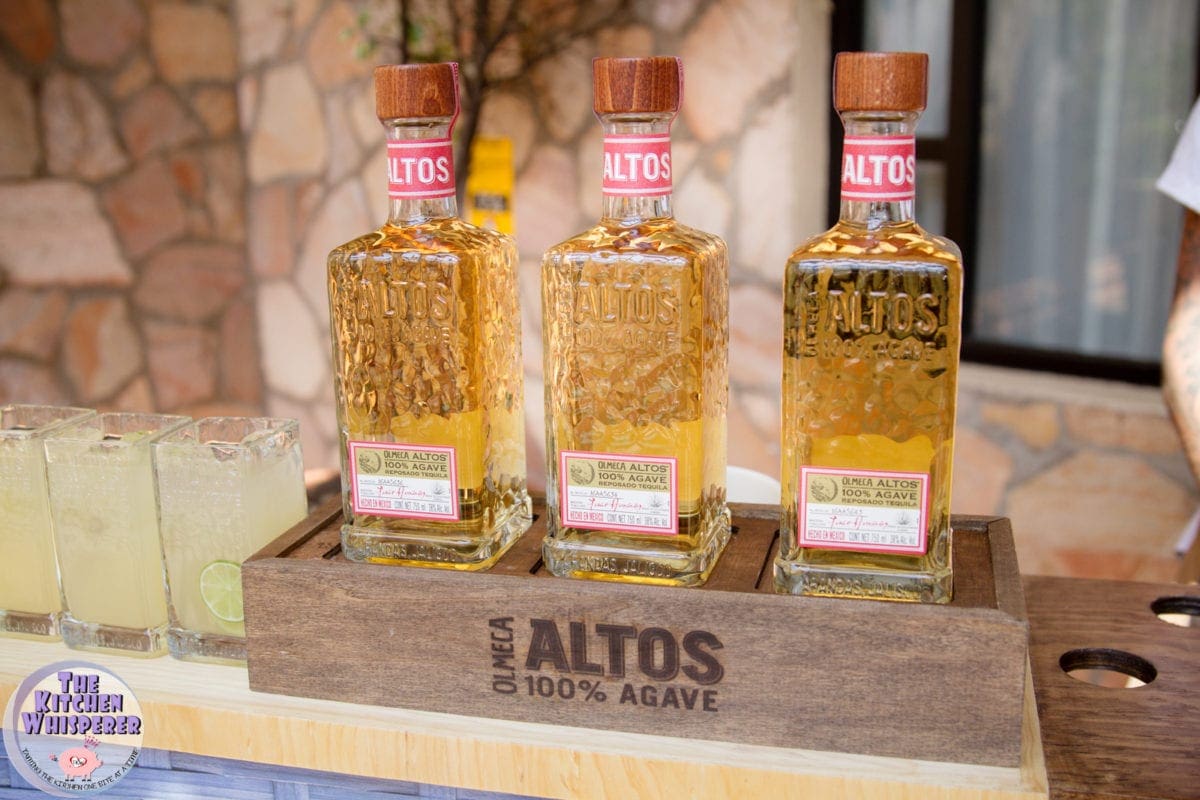
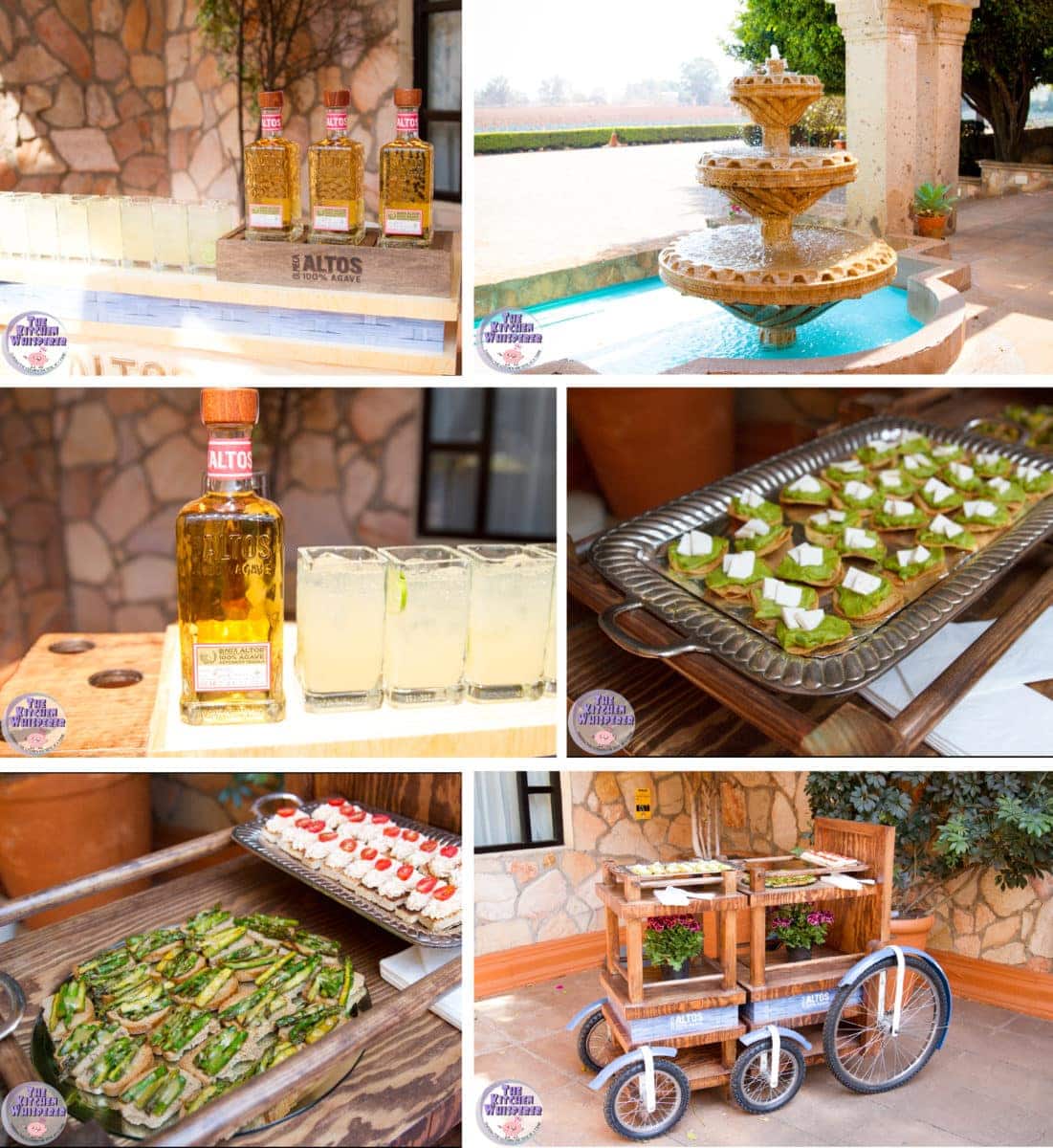
The Distillery Tour
As Hernandez gave us the tour he explained how they made their tequila. As he spoke and educated us on the process, you could tell the pride and passion he had in his craft. Having never seen an agave plant in person I was surprised by its mass. They reminded me of a pineapple on steroids. They were massive needless to say and way too big for this girl to pick up. What I loved about this tour is how we literally went through step-by-step of how they made their tequila. When the agave is first harvested by the Jimadores, they are brought back to the distillery where they are slow roasted in these massive ovens below for 3 days to convert the starch into fermentable sugar.
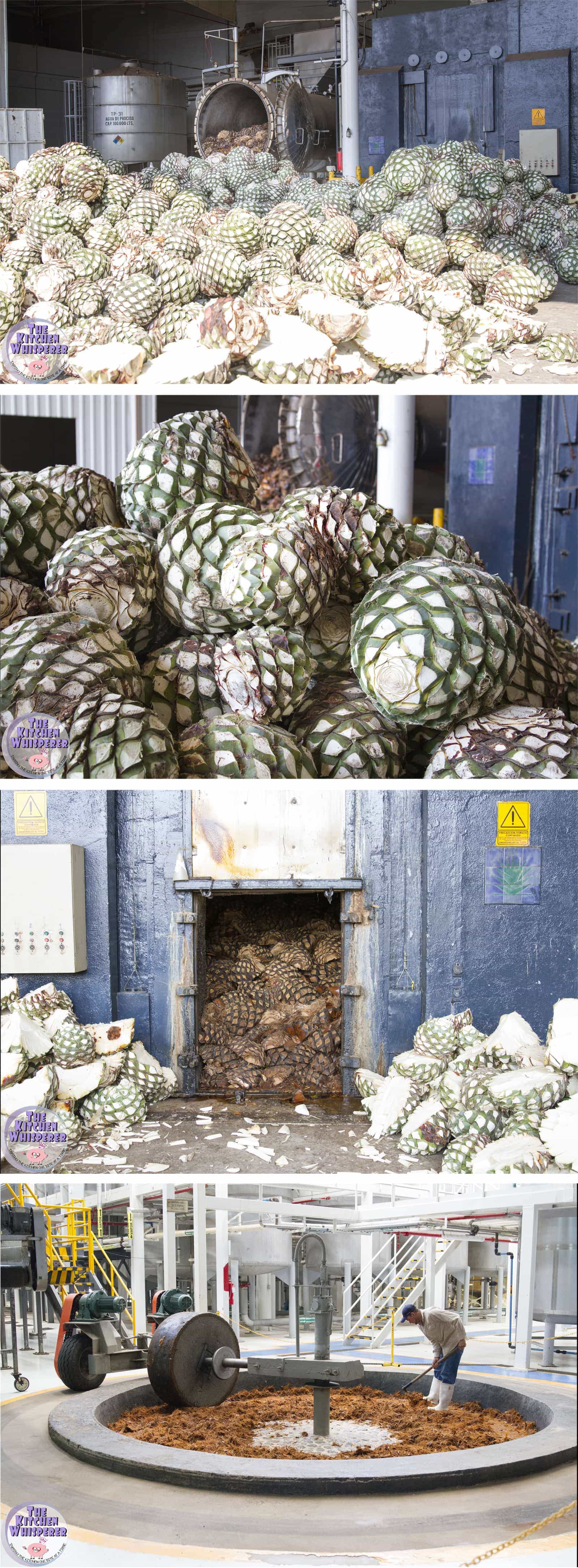
After they have roasted and rested, they are then split into “parts” (it was not disclosed the percentage) where some part of the roasted agave was run through a high-power roller mill and the other part through a Tahona stone (see above). This traditional wheel-press is the cornerstone of their unique production process. The high-power roller mill shreds agave and presses it, releasing the sweet juices. Utilizing the Tahona rolling stone, it crushes approximately 1.5 tons of cooked agave every 2 hours. Once this is completed each batch of agave is fermented for an average of 36 hours.
It is during this fermentation process that they were able to identify and isolate a specific, natural, yeast strain found in agave. This strain is what gives their tequila fresh citrus aromas and fruity flavors. As we toured the distillery he discussed how they distill and age their tequila. Plata is bottled right after distillation. Reposado is aged for a minimum of 5 months up to 8 months in ex-bourbon casks. Añejo is aged for a minimum 18 months.
The Tasting
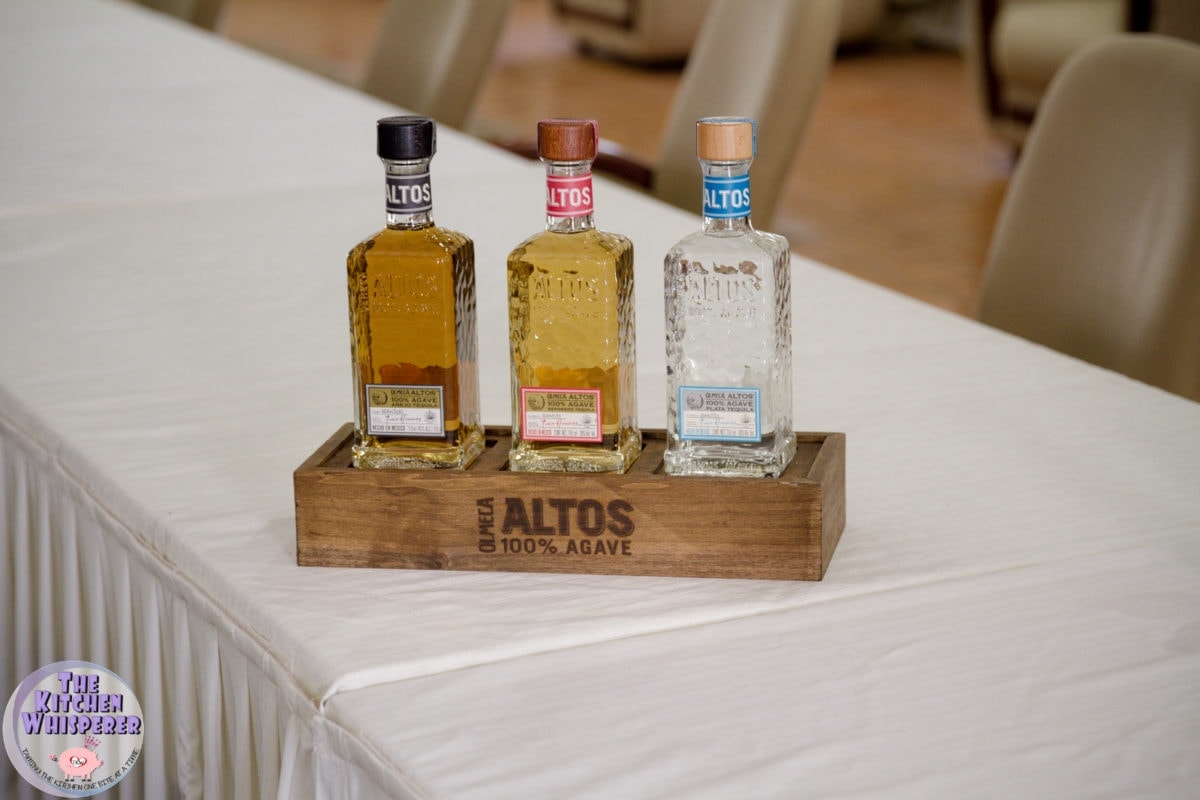
Wrapping up the tour we ended up in one of the tasting rooms. There we were greeted with some snacks, fresh roasted Agave (which tastes like a roasted yam/sweet potato with a sweet fruity undertone) and tequila. We started off with the Plata. The smell is light and citrus-based. The first taste you get that mild citric note with that back-end hint of agave sweetness. The Añejo has more of a deeper, rich smell of that cooked/roasted agave with enhanced flavors from dried fruits like prunes and almonds. This one had a more gentle, silkier feel across the palate. It’s rich and sweet but with a more complex flavor that hits you with notes of vanilla, chocolate and a woody presence. The last was the Reposado. This one had a more pronounced citrus presence of orange and grapefruit married with the cooked agave. This one was probably the most well-balanced one from a finish perspective as the presence of tannins and citrus notes help marry the flavors so well.
Once done, we ventured back to our haciendas to shower, clean up and head back to the distillery for some killer Mexican cuisine (from a authenticate Mexican Taco truck), a Mariachi band (seriously, this was like your birthday and Christmas all in one!) and more Altos Tequila signature drinks. The cuisine, the company, the atmosphere was perfect.
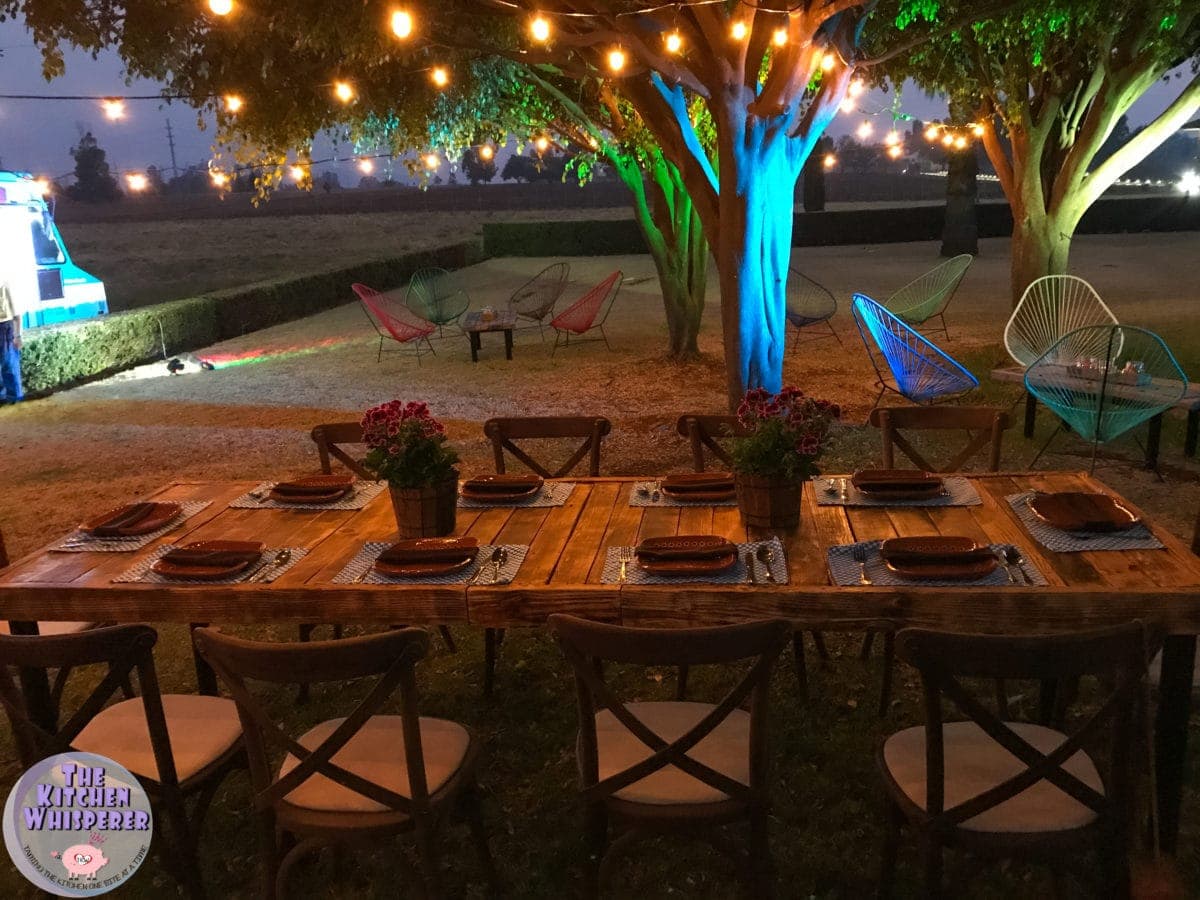
As we departed this lovely dinner, we hit up the small town at one of the local dives, Happy Bar which truly lived up to its name. We invaded that place with and pretty much took it over along with another group of renown bartenders that Altos was sponsoring a local event. The DJ was spinning old’ school 80’s hip-hop songs, Altos shots were pouring from every direction and, even though many of us were jet-lagged, the night air pushed us til the wee hours of the morning.
Day Two – The Agave Fields Tour
Day Two was the day where we were ‘going to get dirty”. This is what I was definitely excited for. Geared up in my bandana, work boots and ponytail I set off with the team back to the distillery. There, we were told we were going to tour the acres of Blue Agave fields…ON ATVs!!! Yeah, now we’re talking! So I haven’t been on an ATV since I was in high school and so excited about this. It was a hot day, I was going to feel the wind in my face, travel through fields of agave plants and just be out in the open. 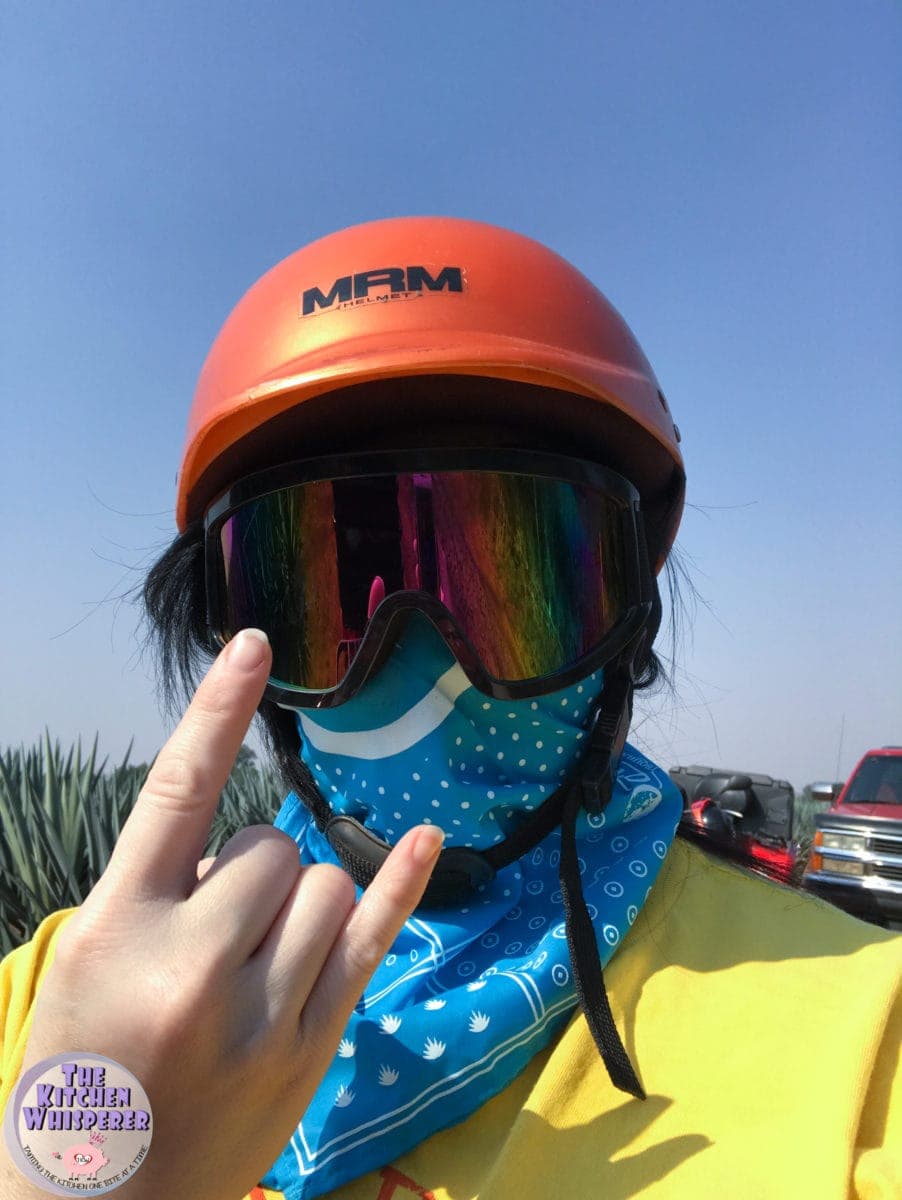
As we started to slowly get into our ATV trail groove I easily understood why the itinerary said: “you’ll get dirty”. In order to produce the best agave the soil that it needs to grow in is rather specific. Jalisco sports a red soil that is mineral and calcium rich. This is a key element for their unique tequila profile – spicy with a fruit bouquet. Touring through you couldn’t help but stare in awe of the fields. Just rows and rows of agave plants.
One point on our tour, we took a break to meet one of the Jimadores and learn how they actually harvest the agave. On average an agave plant needs 6-8 years to mature. One thing I didn’t know about agave tequila is that it can only be made from Agave tequilana Weber blue variety whose fibrous spiky leaves are blue in color. And when I say they are spiky, trust me. My booty got too close to one and it felt like I was stabbed. However the momentary booty stab was quickly replaced with elation as we were brought to a beautiful luncheon in the middle of one of the fields. And, as we devoured incredible foods, the Mariachi band came out from the distance bringing smiles to everyone’s faces.
As we wrapped up the tour, I couldn’t thank Hernadez enough for his hospitality, the knowledge he shared and the opportunity to learn and be a part of something amazing. It truly was incredible. Into the van we went for a 45 minute ride back to hacienda where we had to shower, pack our stuff and be in the van to hit the airport for an hour+ flight to Mexico city.
Day Three – Mexico City, Mercado de Medellín
The next morning we woke up with a fun-packed day planned. We were meeting Chef Jorge Fitz from Casa Jacaranda at Mexico City’s largest market, Mercado de Medellin. In listening to Jorge, he explained that this market has influences from all regions over the country, not just those specific to Mexico city. It’s rather immigrant-centric were diversity is everything and a chef’s wonderland! As we toured the market he explained the various types of peppers, usages, mole varieties and incredible cheeses. As we sampled the sauces, I’m pretty sure I burnt a few layers off in my mouth but the flavors were so fresh and unlike anything I had here in states. Then he said we could go explore on our own. I was like a little kid with my head whipping from one side to another trying to look at as much as I could. While I can barely ask where the bathroom is in Spanish, food is one of those universal languages that we all can speak. As I walked through the aisles, meeting many of the shop owners I couldn’t help but smile. This is one place I could definitely see me shopping at daily if I lived here.
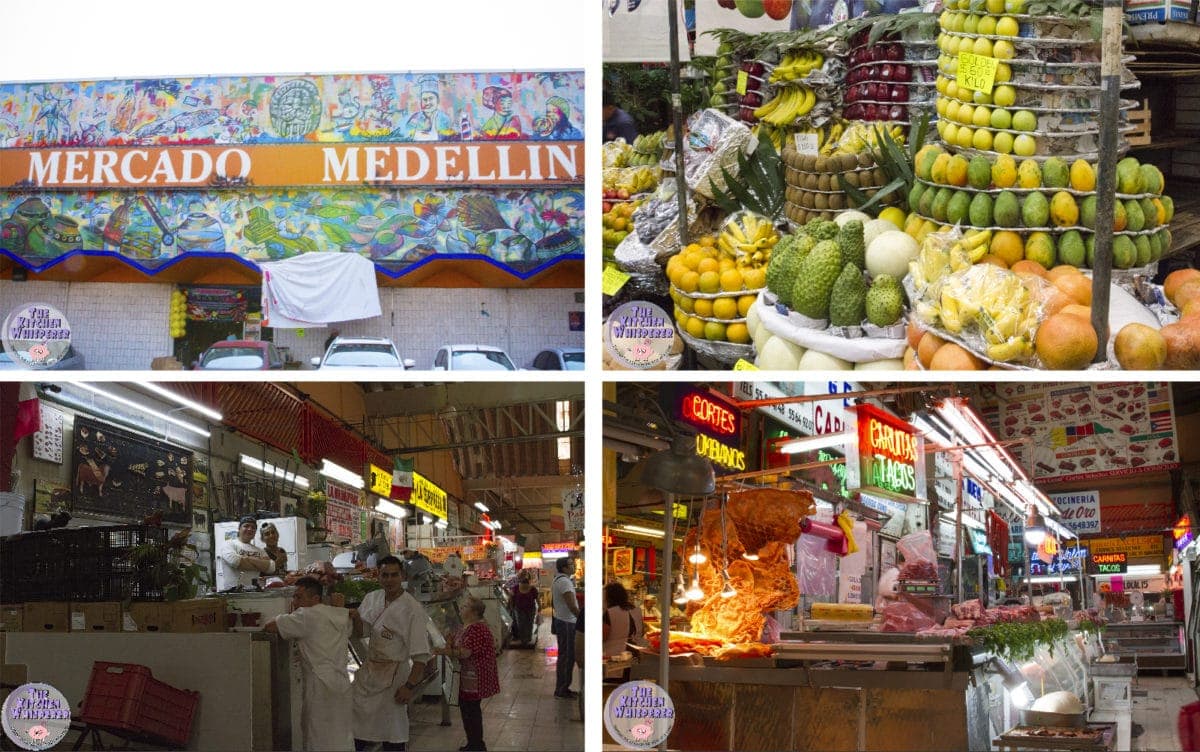
Hands-On in the kitchen
As we gathered our items from the market we were taken to Jorge’s home and teaching studio. Here he along with Chef Beto Estúa and others taught us how to make authentic Mexican dishes. I’ve been fortunate in my life that I’ve had opportunities to learn how to make authentic Mexican dishes so I offered to make the dough for the tamales. Each of my travel mates was able to get their hands “dirty” and help make salsa, roast peppers, stuff the tamales and assorted other dishes. I honestly was in my element and having a blast. Both Beto and Jorge made us feel welcome in their bright and airy kitchen. As the rest of the dinner was prepared we ventured up the roof to partake in some freaking amazing guacamole and chips.
Now one thing that was new to me was this little dish of ‘brown’ things that were the size of an ant. Jorge could see my intently looking at it and finally said “I can see you trying to figure out what that is. Are you an adventurous eater or would you rather I tell you what it is first?” Is this a trick question? I laughed and said “tell me what it is and even if it’s unusual I’ll try it. I’m open to new things.”
And that’s when he lays it on me “roasted grasshoppers”. Wait, what? Like grasshopper-grasshopper? Now I’m not one that’s afraid of bugs but …. However I’m a woman of my word. He showed me how they eat it. You scoop up some guac on your chip and then sprinkle on a few roasted (crispy) grasshoppers. Now they were teeny but still, they were grasshoppers. Without hesitation, I loaded up my chip, added a few and took the bite. So here’s the thing, they actually add to the flavor the chip experience. They add almost a roasted nutty flavor to the chip plus hey, it’s protein!
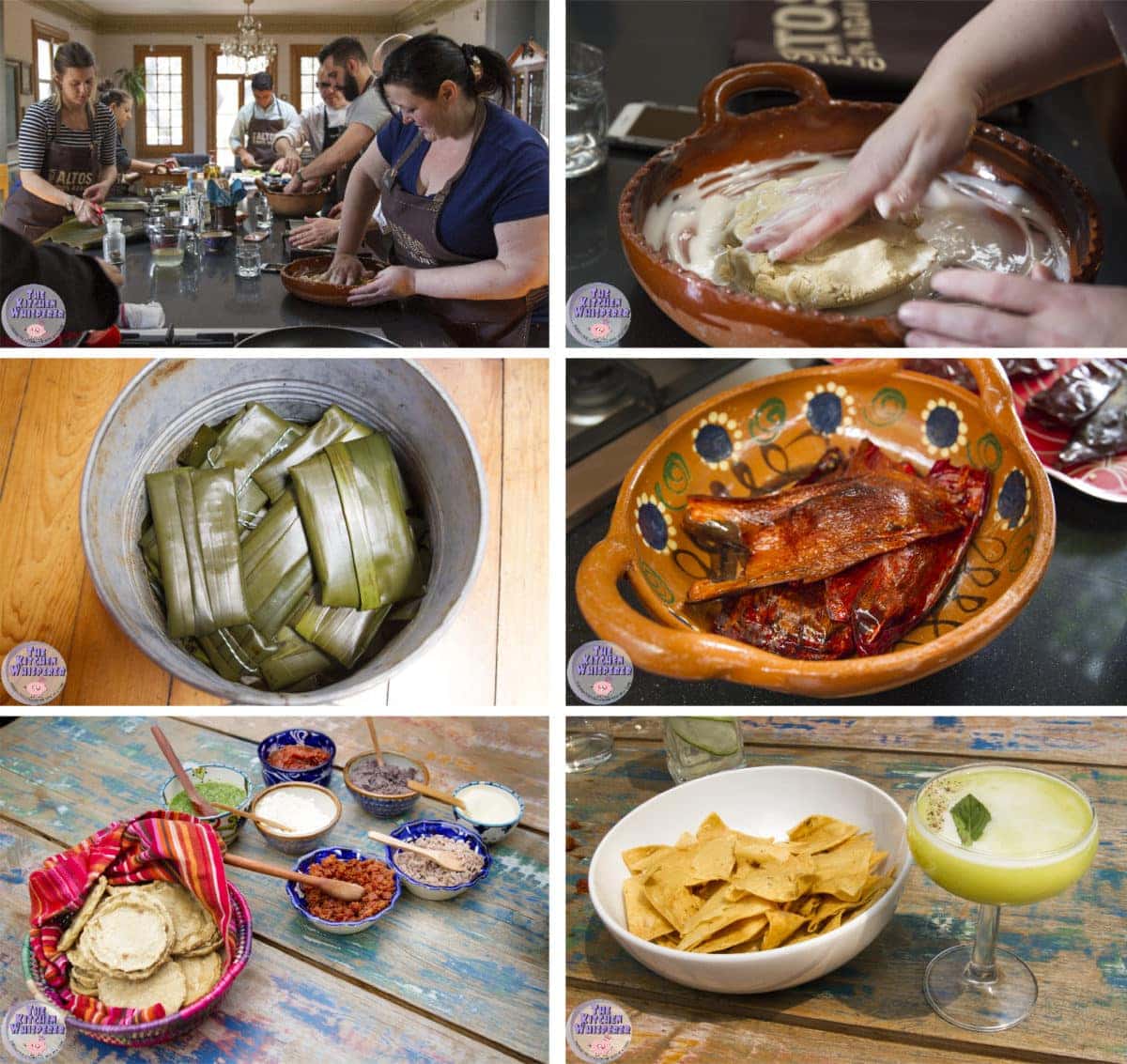
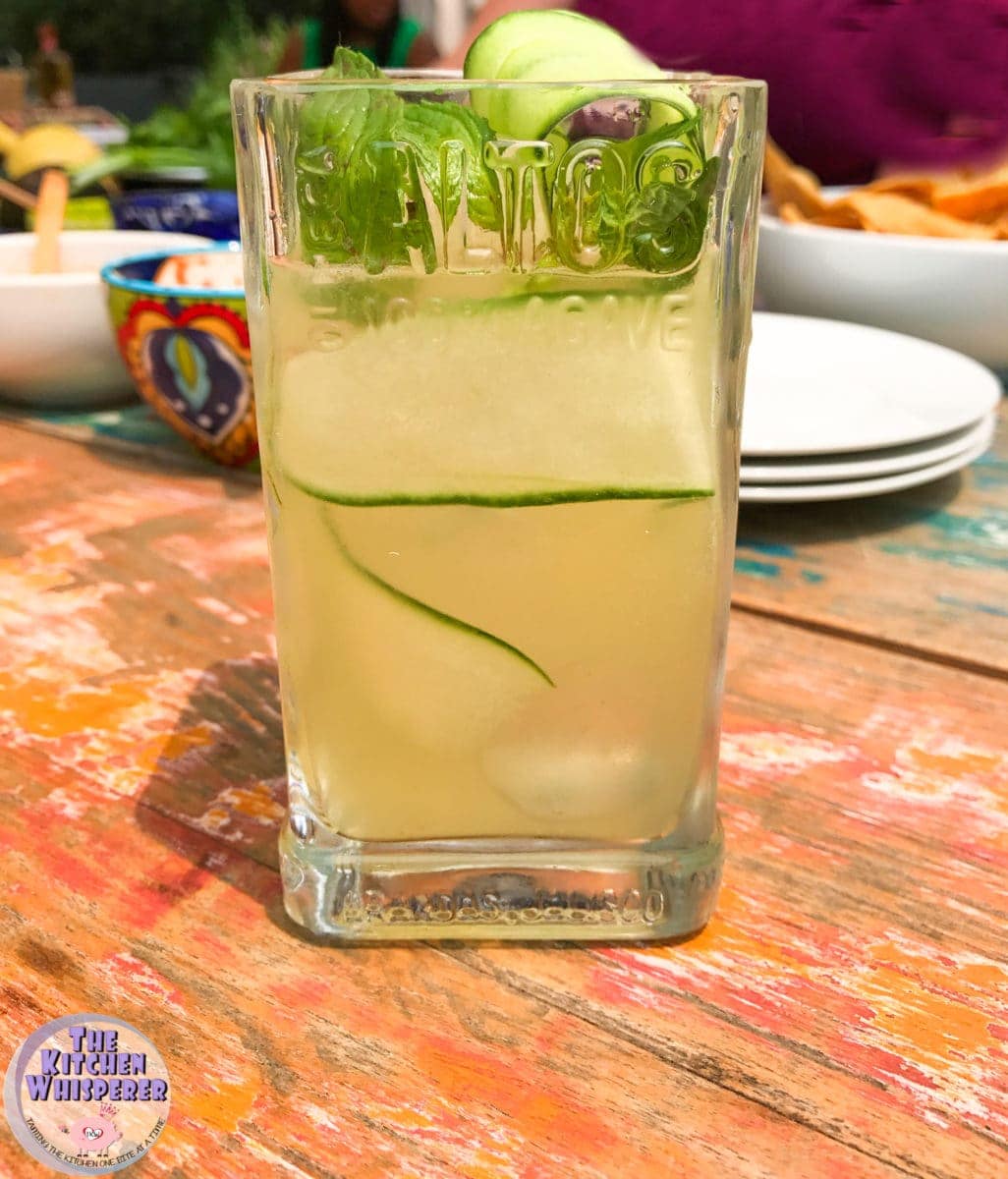
After an incredible all-day experience with Jorge and Beto, we gave out hugs, walked away with a full belly and for those two, an open invite to my house if they are ever in Pittsburgh. As we headed back to the hotel, the rain started and we had some time to ourselves if we wanted to explore or rest as that night was going to be another long night. I chose to take a shower and catch up on a couple hours of sleep. That night we met up with Jesús’ son, Jesús for an incredible 11-course dinner and bar/club tour of the city. Jesús Jr was just as hospitable as his father and proved to be one amazing tour guide/bar buddy/all-around-great-guy!
I honestly don’t know what time we got back to the hotel but it was late, like really, REALLY late, I had partaken in my share of Altos tequila and danced for hours. Now it wasn’t until I was on the flight home the next day did I put two and two together as to why my thighs hurt so bad. I think I did about 6 hours of hard-core cardio in those dance moves. But I’d do it all again as this trip was truly memorable. From the culture exploration to the knowledge gained, it was incredible. Til next time… <insert Altos toast here!>
PrintTAMALES OAXAQUEÑOS W/ MOLE NEGRO
Find more fantabulous recipes, tips and tricks at www.thekitchenwhisperer.net. Also, join our TKW Family on Facebook, Twitter, Pinterest and Instagram
- Yield: 4-6
Ingredients
- 1kg tortilla “masa” (nixtamalized corn dough)
- 250g lard
- 1 1/2 cup cold chicken broth
- 500g shredded chicken (1/2 onion, allspice berries, bay leaves)
- 2 tbsp dry tequesquite (mineral leavening agent) or 2 teaspoon baking soda
- 300g mole negro (or Oaxaca mole) paste
- Banana leaves
Instructions
Dough:
- In a clay pot, cream the lard until it “swells up” and is silky
- Incorporate the corn masa and the lard, working it so it is homogeneous
- Grind the cooked rice in a mortar or Metate until it becomes a manageable paste
- If needed, add chicken broth (spoonful by spoonful) until you have a very smooth and
- manageable dough that’s easy to lift from the pot
Chicken:
- Put the chicken in a pot, cover it with cold water and add 1/2 a small onion, 2 Mexican
- bay leaves and 2-3 allspice berries
- Let it boil in high heat for approximately 30 minutes
- Take out the chicken and shred it when it’s cold enough to handle.
- Let the broth cool down. Reserve.
Mole:
- In a saucepan, make the mole by slowly adding chicken broth to the mole paste on
- medium heat. Let the mix simmer until you can see the bottom of the pan when you move
- the spoon from side to side. Set aside and do not stir.
- Cut the banana leaves in 25×25 centimeter each and broil them in a pan with water for 5
- mins until they change color
Assembly:
- Add water to the steamer and put it on high heat
- Make a ball of dough a size that’s between a ping-pong and a tennis ball
- Flatten it on one of the banana leave squares until it’s approximately 1/4 in. thick
- Add a generous spoonful of mole on the dough and sprinkle it with shredded chicken
- Fold the banana leave as if you were going to make a roll, then fold the sides to give the
- tamale an oblong shape. Lay the tamales flat on a tray as you assemble them all
- When you’re done assembling, place a layer of banana leaves at the bottom of the
- steamer, place the tamales (flat) on top of the leaves, cover with some more banana
- leaves, then with a kitchen towel to prevent the steam from leaking. Close the steamer
- as tightly as possible.
- Cook on high for 40 minutes
Notes
Recipe provided by Altos Tequila and Casa Jacaranda
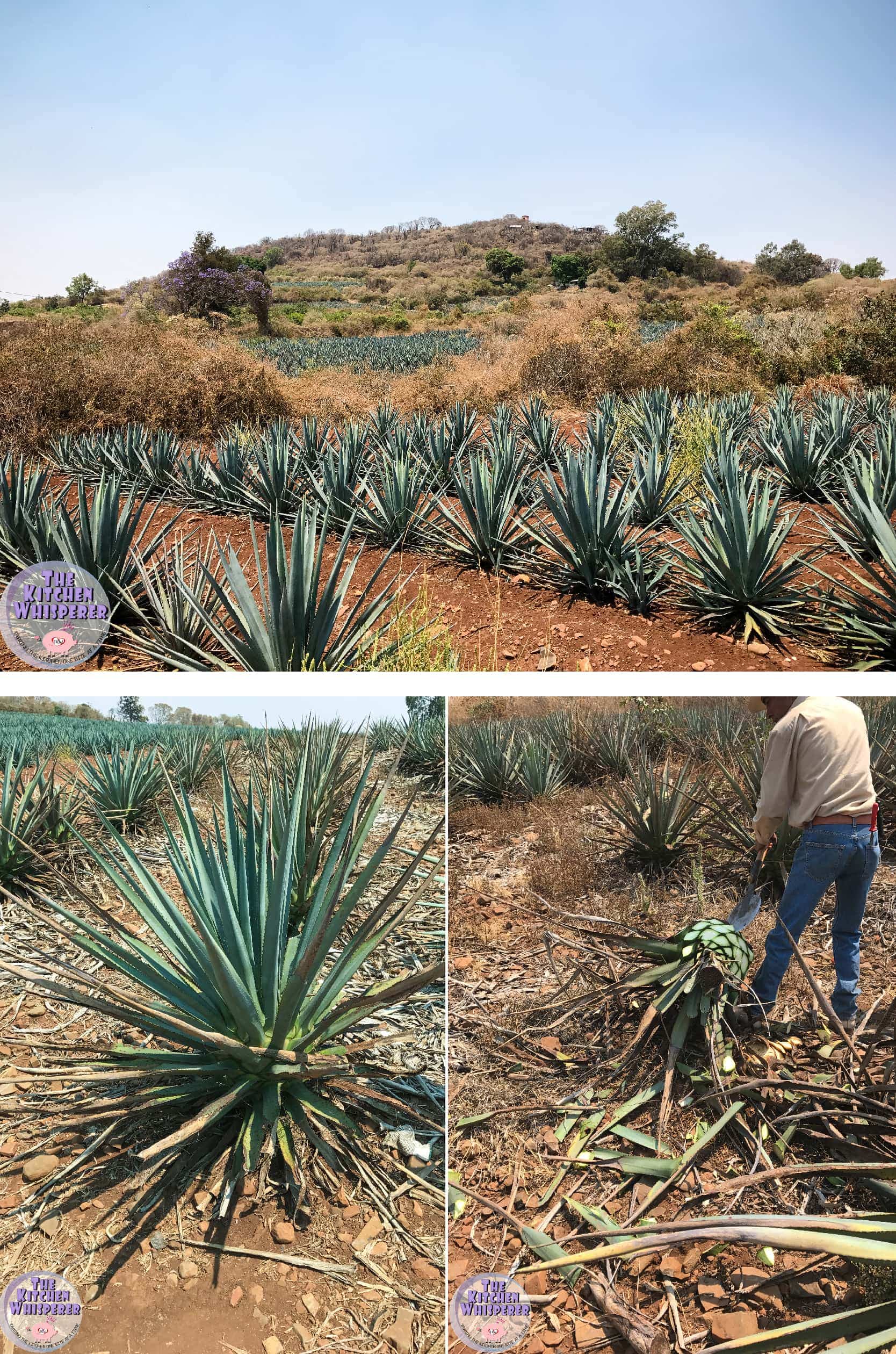




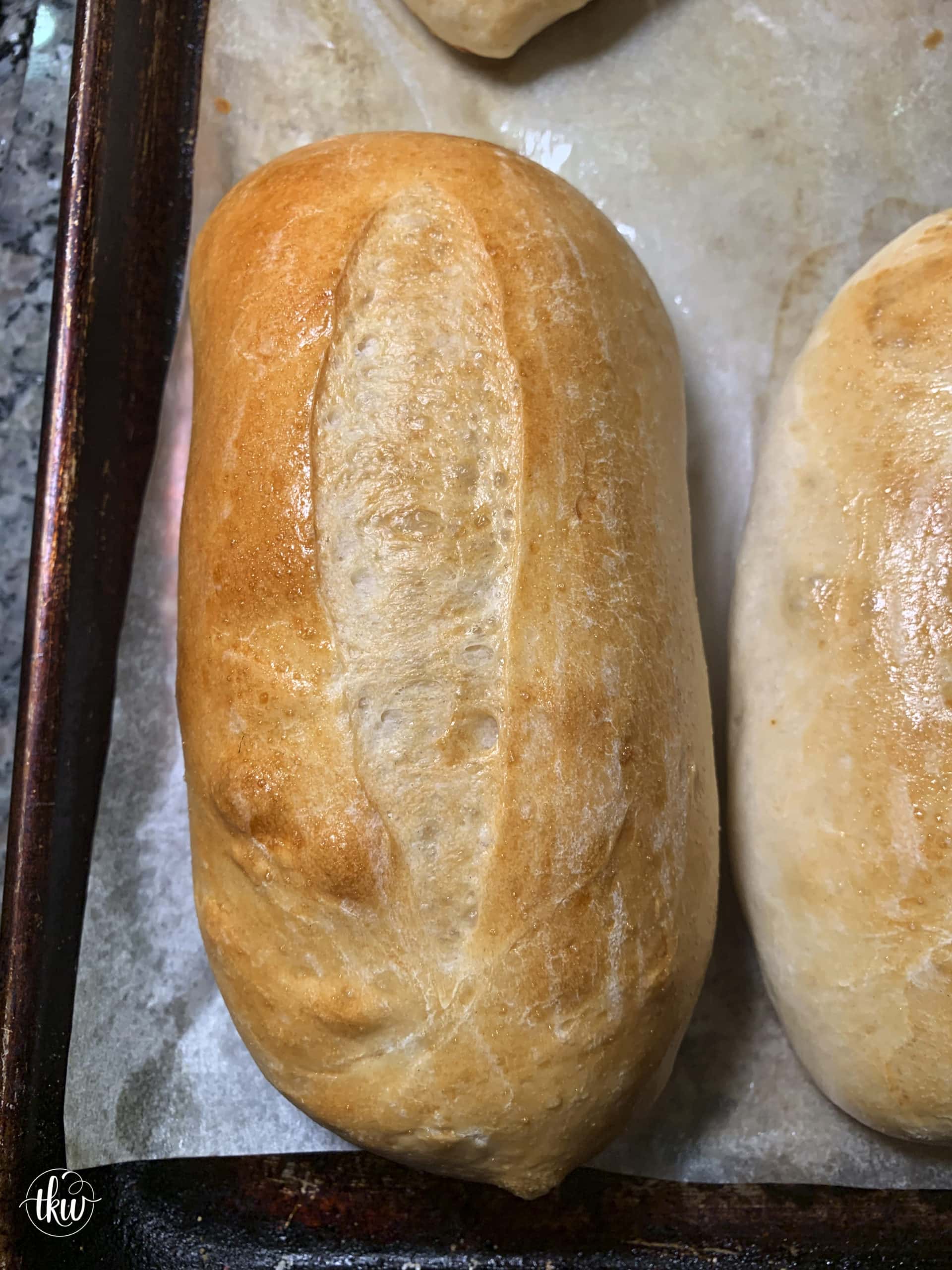
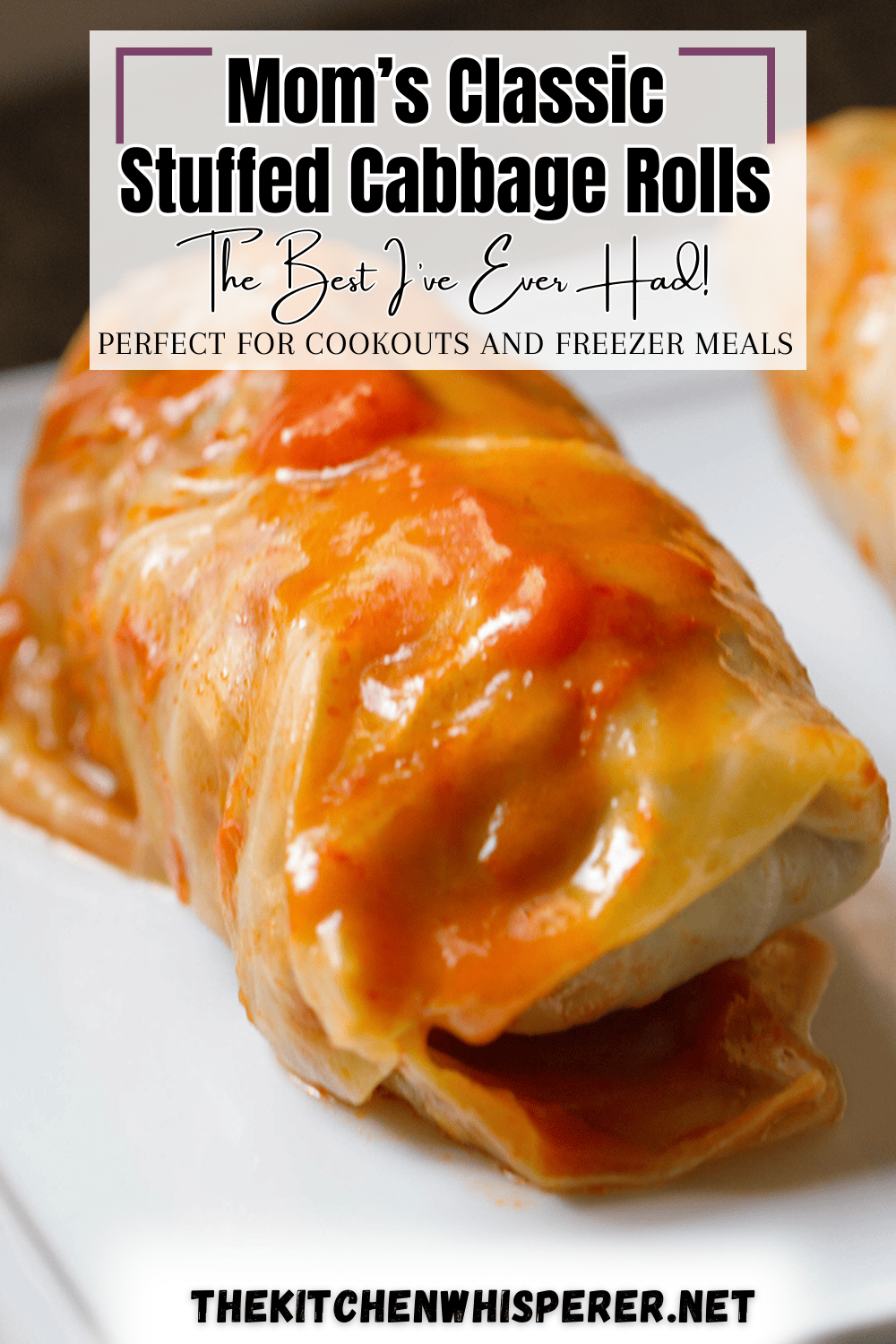
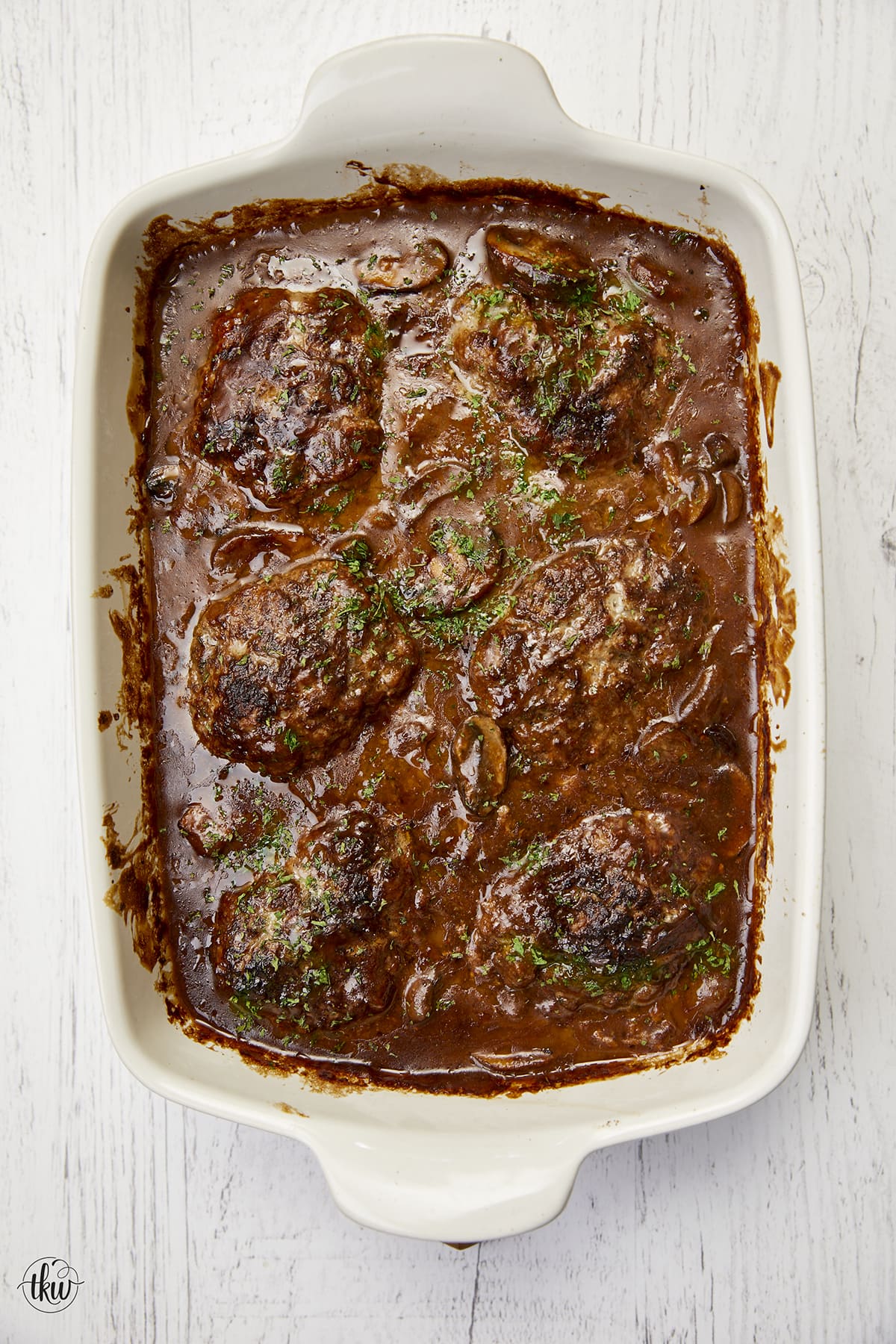

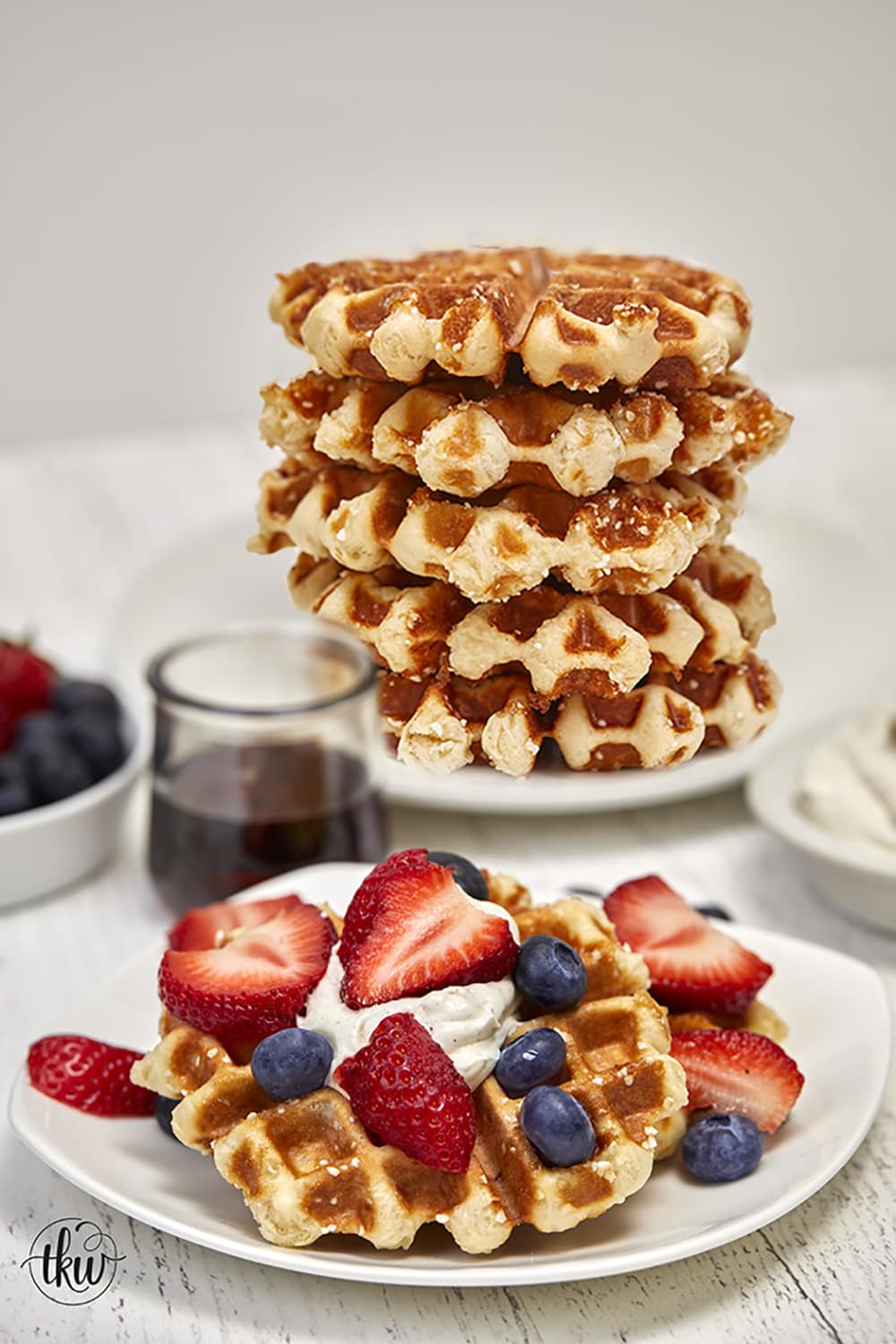

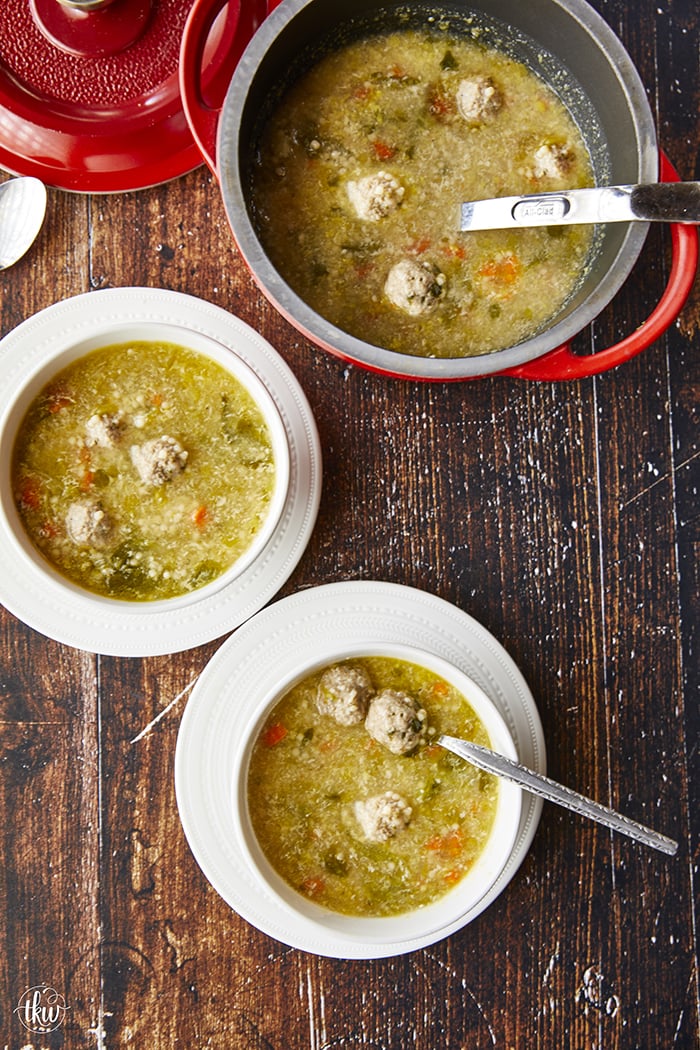

Leave a Reply